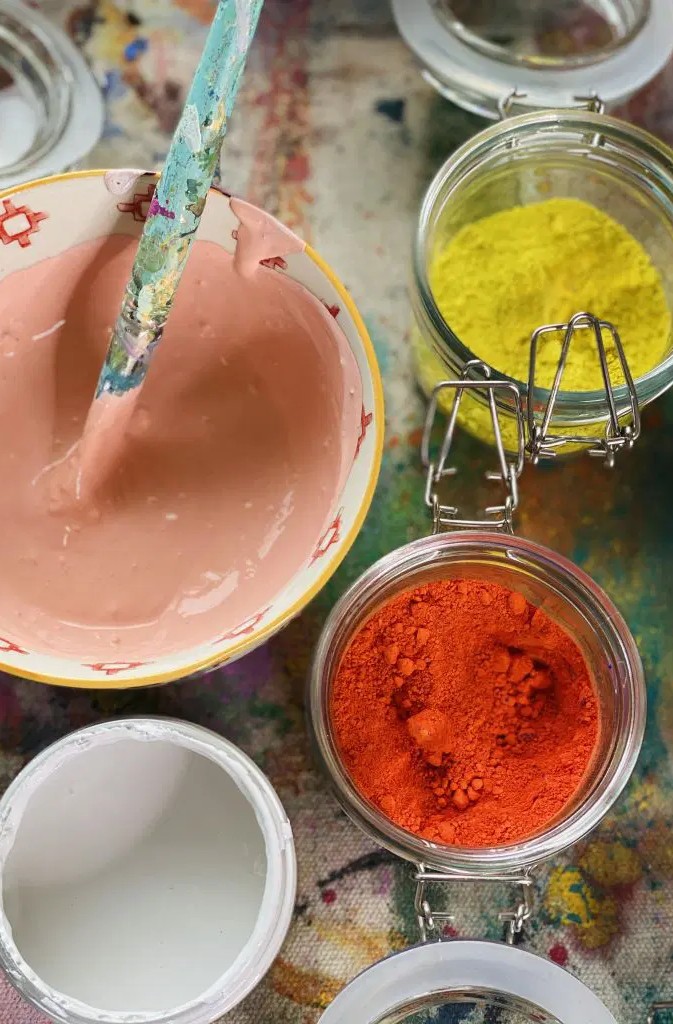Dispersant NNO, also called the Sodium Salt of Naphthalene Sulfonate Formaldehyde Condensate, is a super handy chemical used in tons of industries. It’s an anionic surfactant, which is a fancy way of saying it helps keep stuff like particles or dyes evenly mixed in liquids, usually water, so they don’t clump up or settle.
What Exactly is Dispersant NNO?
Dispersant NNO is a chemical made by mixing naphthalene sulfonate (a compound from naphthalene, which comes from coal tar) with formaldehyde and then turning it into a sodium salt with sodium hydroxide. The end result is usually a yellow-brown powder that looks a bit like fine dirt or sand. Sometimes it comes in granules, but powder is more common. It dissolves really well in water, which is why it’s so useful for mixing things in liquid-based processes.
Its main job is to act as a dispersing agent, meaning it keeps tiny particles—like dyes, cement, or pigments—floating evenly in a liquid instead of sticking together or sinking. It’s not like soap that makes bubbles or soaks deep into stuff; it’s more about keeping mixtures smooth and stable.
How It Works: Key Features
Here’s what makes Dispersant NNO so special:
- Negative Charge (Anionic): It has a negative charge, which lets it grab onto particles and push them apart, kind of like magnets repelling each other. This helps lower the water’s surface tension, making it easier to mix things in.
- Tough as Nails: It can handle hot temperatures, acidic or alkaline solutions, and even hard water (water with lots of minerals like calcium). This makes it great for tough industrial jobs where conditions aren’t gentle.
- No Bubbles: Unlike some chemicals that create foam (like dish soap), Dispersant NNO stays foam-free, which is perfect for processes where bubbles would mess things up.
- Keeps Things Stable: It wraps a protective layer around particles, like a shield, to stop them from clumping or settling. This keeps mixtures like dyes or concrete nice and even.
- Safe but Needs Care: It’s generally okay for industrial use, but you don’t want to breathe in the powder or let it sit on your skin for too long. Wearing gloves and working in a airy space is a good idea.
How It’s Made
Making Dispersant NNO involves a few steps:
- Sulfonation: Naphthalene is treated with sulfuric acid to create naphthalene sulfonate.
- Condensation: This is mixed with formaldehyde to link the molecules together into a chain-like structure.
- Neutralization: Sodium hydroxide is added to turn it into a sodium salt, which is the final product.
The goal is to make a clean, high-quality powder with no leftover chemicals like unreacted formaldehyde. Good Dispersant NNO is consistent in color, dissolves easily, and doesn’t have a strong smell.
Where You’ll Find Dispersant NNO
This chemical is like a behind-the-scenes hero in all kinds of industries. It’s used to make products better, save time, and keep processes running smoothly. Here’s a deep dive into where it shows up:
1. Textile and Dye Industry
Dispersant NNO is a big deal in making clothes and fabrics look great:
- Dyeing Fabrics: It works with dyes like vat dyes, reactive dyes, acid dyes, and disperse dyes to keep dye particles spread out in water. This means your T-shirt gets an even color with no splotches.
- Grinding Dyes: When making dyes, it helps grind particles into tiny bits so they mix better in water, giving smoother and brighter results.
- Printing on Fabrics: In textile printing or dyeing mixed fabrics (like silk and wool blends), it stops colors from bleeding from one fiber to another. For example, it keeps wool dye from staining silk.
- Even Coloring: It acts like a leveling agent, making sure dyes soak into fabrics evenly so there’s no patchy look.
- Wetting Fabrics: It helps water and dyes spread across fabrics better, speeding up the dyeing process.
2. Construction Industry
In construction, Dispersant NNO helps make stronger buildings and smoother surfaces:
- Concrete and Cement: It’s added to concrete mixes to cut down on water while keeping the mix easy to pour. Less water means stronger concrete that lasts longer.
- Gypsum and Plaster: It mixes gypsum particles evenly for smoother plaster, like the kind used on walls or ceilings.
- No Clumps: It keeps cement or gypsum particles from sticking together, so the mix is uniform and sets properly.
3. Leather Industry
Leather goods, like shoes or bags, get a boost from Dispersant NNO:
- Tanning Leather: It helps tanning chemicals spread evenly through the leather, making it softer and more consistent.
- Dyeing Leather: It ensures dyes cover leather evenly, so you don’t get weird color patches.
- Stable Mixtures: It keeps tanning or dyeing solutions steady, so they work the same way every time.
4. Papermaking
Dispersant NNO makes paper better:
- Pulp Mixing: It spreads pulp fibers and additives evenly, so paper comes out smooth and strong.
- Paper Coatings: It keeps pigments in coatings well-mixed, making paper look nicer and print better.
- Fewer Flaws: By stopping clumps, it reduces defects in paper, like rough spots or weak areas.
5. Water Treatment
It’s used to keep water systems clean and efficient:
- No Scale Buildup: It stops minerals or particles from forming crusty deposits in pipes, boilers, or cooling towers.
- Clearer Water: It keeps tiny particles floating so they can be filtered out, making water cleaner.
- Wastewater Help: In industrial water treatment, it helps separate out gunk for easier processing.
6. Pigments and Paints
For paints, inks, and coatings, Dispersant NNO is key:
- Even Pigments: It keeps pigment particles spread out, so paints have consistent color and no streaks.
- Stable Cans: It stops pigments from sinking to the bottom of paint cans, so you don’t have to stir as much.
- Better Finish: It helps paints go on smoother and last longer.
7. Rubber and Latex
In making rubber or latex products, it’s a helper:
- Latex Stability: It keeps latex from clotting, so it stays smooth for making things like gloves, balloons, or adhesives.
- Better Rubber: It mixes fillers into rubber evenly, making tires or other products stronger and more uniform.
- Easier Processing: It makes rubber mixes less sticky and easier to shape.
8. Electroplating and Chemicals
- Electroplating: It helps metal-coating solutions stay even, so metals like chrome or nickel plate smoothly onto surfaces.
- Chemical Production: It’s used to mix chemicals evenly in things like pesticides or fertilizers.
- Pesticides: It spreads active ingredients in sprays, making them work better.
9. Other Cool Uses
- Ceramics: It mixes ceramic materials for better-quality tiles or pottery.
- Oil Drilling: It keeps drilling fluids stable, preventing gunk from settling.
- Detergents: It helps mix ingredients in some cleaning products for better performance.
Why People Love Dispersant NNO
This chemical has a lot going for it:
- Works Everywhere: It’s used in so many industries because it can handle all kinds of conditions.
- Saves Cash: You only need a small amount to get big results, so it’s budget-friendly.
- Super Tough: It doesn’t break down in heat, acid, or hard water, so it’s reliable.
- Makes Stuff Better: Whether it’s brighter clothes, stronger concrete, or smoother paper, it improves the final product.
- Easy to Use: It dissolves quickly in water and mixes well, so it’s not a hassle to work with.
What’s Not So Great
No chemical is perfect, and Dispersant NNO has some limits:
- No Foam or Soaking: It doesn’t make bubbles or sink deep into materials, so it’s not good for jobs needing those things, like cleaning or deep-wetting.
- Handle with Care: The powder can irritate your skin, eyes, or lungs if you’re not careful. Always use gloves, goggles, and a mask, and work in a breezy area.
- Environmental Stuff: It’s safe for most uses, but you need to dispose of it properly to avoid harming rivers or soil, especially since it’s got naphthalene in it.
- Not Always the Best Fit: Some jobs might need other chemicals, like ones that foam or are more eco-friendly.
How to Use It Safely
To keep things safe when working with Dispersant NNO:
- Wear gloves, goggles, and a mask to protect your skin, eyes, and lungs.
- Work in a well-ventilated spot so you’re not breathing in dust.
- Store it in a cool, dry place, away from stuff like strong acids or oxidizers that could react with it.
- Dispose of it following local rules to keep the environment clean. Don’t just dump it down the drain!
How It Stacks Up Against Other Dispersants
There are other dispersing agents out there, and here’s how Dispersant NNO compares:
- Lignosulfonates: These are more nature-friendly but don’t hold up as well in extreme heat or acid compared to Dispersant NNO.
- Polycarboxylates: These are awesome for concrete but can cost more than Dispersant NNO.
- Non-Ionic Surfactants: These make foam and wet things better but might not be as good at keeping particles spread out in some cases.
Picking the right one depends on what you’re doing, how much you want to spend, and whether you need something eco-friendly.
What’s Coming for Dispersant NNO
As industries keep growing, Dispersant NNO will probably stay a favorite because it’s so useful. But there’s also some cool stuff happening:
- Greener Options: Scientists are working on versions that break down easier in nature to meet tougher environmental rules.
- Better Formulas: They’re tweaking it to make it even more effective or mix it with other chemicals for specific jobs.
- New Uses: It might show up in high-tech fields like nanotechnology, where tiny particles need to be perfectly mixed, or in new kinds of materials.
Tips for Using Dispersant NNO
If you’re thinking about using it, here are some practical pointers:
- Check the Specs: Get a product data sheet from the supplier to know exactly how much to use and what conditions it works best in.
- Test First: Try it on a small batch to make sure it works for your specific job.
- Mix Properly: Dissolve it in water slowly to avoid clumps, and follow any mixing instructions.
- Talk to Experts: If you’re not sure how to use it, ask the supplier or an industry pro for advice.
Wrapping It Up
Dispersant NNO is like a secret weapon for industries that need to keep things mixed and smooth. From making bright, even-colored clothes to stronger concrete, better leather, or cleaner water, it’s a chemical that does a lot of heavy lifting behind the scenes. It’s tough, affordable, and easy to use, but you’ve got to handle it carefully and dispose of it right to avoid any trouble. If you’re curious about how it can help with a specific project, check with a supplier or dig into the product details to get the most out of it. Dispersant NNO might not be a household name, but it’s a big deal in making the stuff we use every day!

